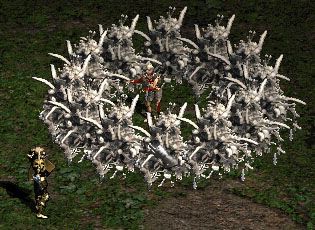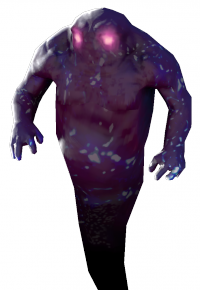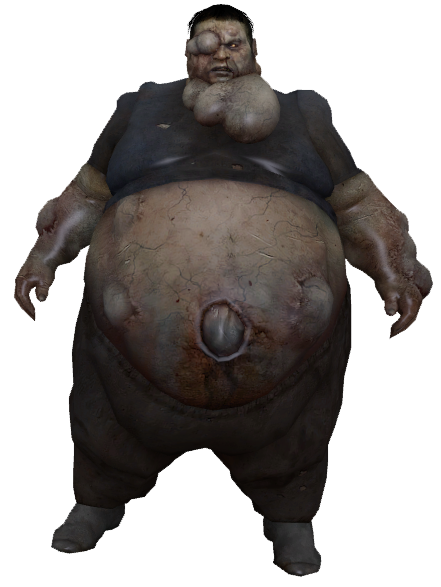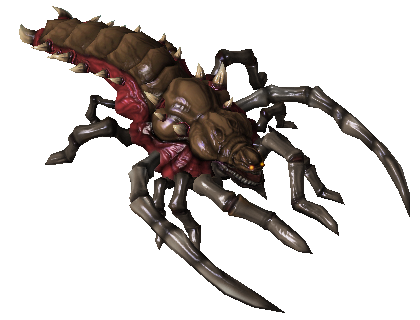So it's been a while since I've talked
about my Necromancy card game (mostly because I've been busy with
other things, mostly Halo related pursuits). But I've finally gotten
back into the swing of working on polishing the design, and giving a
more consistent, intentional purpose to each level of card in the
game.
Today, I'm going to be talking about
the Jacks of each suit, and my design goals I set forth after editing
the first draft of cards, which were mostly just thrown together for
the sake of getting the game's core mechanics to a state they could
be tested.
To start, let's talk about the Jacks of
the Undead.
As I said in my last blog, my goal for
the Queens was to be a temporary power spike on the field that could
drastically alter the field but would lose power and influence after
a few turns. The Queens fit the themes of their respective suits,
and for a short time, are the strongest of their type.
The Jacks, however, don't like to play
by the rules. They like to be different.
And so with Jacks, my goal was to avoid the standard classes
(Destroyer/Consumer/Possessor) of the suit, or to have play patterns
significantly different than their fellow suited undead brethren.
The
Jack of Skeletons
Much
like the King and Queen of Ghouls, I realized my 10 and Jack of
Skeletons were swapped from my goals for them. And while I'll go
more into the 10 of Skeletons in my next blog, for now I'll just
mention that the Skelettin and Bone Prison's card number were swapped
to fit the patterns I desired.
Most
Skeletons are destroyers. Skelettin was a Destroyer. Bone Prison,
however, is a Possessor. So it was pretty obvious to me when I
established my new design goals for 10s and Jacks that these two
needed to be swapped.
Bone
Prison's effect makes it a very powerful Possessor for countering
massive threats on the field.
| The possessed creature cannot move, attack, or be attacked. |
It
has a fairly high threshold (possession strength) for a Possessor,
making it able to possess almost any card in the game. And
essentially, Bone Prison removes that card from play. While most
Skeletons are focused on just being strong threats that can turn a
creature back into a stack of Souls, the Bone Prison's job is to put
a creature into effective stasis for the remainder of the match.
Your opponent's only reaction is to say to himself, “Welp, I'm
boned.”
The
Jack of Ghosts
Ghosts
are a suit comprised almost entirely of Possessors, so it's only
fitting the Jack of Ghosts to be a more combat-oriented class. Thus
was born, the Eidolon: a Destroyer.
The
Eidolon is a very weak card statistically, a meager 2/2 with a
casting cost of 4. But that's where his effect comes in:
| If Eidolon is possessed, its Damage and Health are increased by the Threshold value of its Possessor. |
As
a reminder...or just in case I haven't mentioned it previously:
players may use Possessors on their own creatures. Possessors can
double as a “I want to use this card of my opponent's” or as
equipment cards, to power up their own creatures. So Eidolon
effectively becomes a combo-focused card, meant to be summoned in a
safe zone far from your opponents and possessed by one of your own
creatures, where he may then wreak havoc across the board as a high
damage, high health undead warrior. He's potentially the strongest
creature in the game, especially when combined with the King of
Ghosts...which I'll talk about another day.
The
Jack of Zombies
Zombies
are a suit dedicated to being persistent threats on the field. Many
of them reanimate at the end of the turn in which they were
destroyed. So of course
when I set out to design the Zombies' Jack, I had to call up the old
Zombie game trope of an exploding corpse.
Volatile
Cadaver is just that. A Destroyer (just like the rest of the suit),
that makes sure to take someone down with it.
| When Volatile Cadaver is destroyed, its Owner may destroy up to 2 adjacent creatures. | If creature targeted by this card's effect has more than 10 Health, deal 10 Damage instead. |
Volatile
Cadaver's made to be sacrificed for the greater good – the reverse
Hydra method. Where one Cadaver falls, two enemies shall go with it.
As much as I loved Diablo 2, I couldn't possibly make a Necromancy
game without Corpse Explosion, now could I?
And,
just in case people decided to try to avoid attacking the Cadaver...
if you happen to have it in the Crypt (assuming I keep the Crypt
mechanic), Volatile Cadaver gains Taunt, forcing it to be targeted by
adjacent opponents.
The
Jack of Ghouls
Ghouls
are a suit of Consumers, so I didn't want to give them another
combatant as their Jack. Thus the Defiler, a Possessor, was born.
Unlike most Possessors, which focus on flat buffs to the cards they
possess and tend to be more beneficial for already strong cards, the
Defiler can be used in two ways, thanks to the wording of its effect.
| The possessed creature becomes a Consumer, with a Damage value equal to the number of Souls in its Soul Stack. |
If
the Defiler possesses a creature with a high attack but only a few
Souls in its Soul Stack, it actually debuffs them, making them more
able to be destroyed. However, the Defiler can also be used to
possess a weak creature to make it able to become a larger threat as
long as it remains on the field. Thanks to the conversion into a
Consumer, the Defiler's possessed creature grows stronger with each
combat victory.
While
the Jack of Ghosts is most definitely intended to work within its own
suit, the Jack of Ghouls is best when working with Skeletons or
Zombies, which are generally not already Consumers.
That's
it for the talk about Jacks! Expect another blog on Friday to talk
about the overhauls to the highest of numbered cards, the 10s.








No comments:
Post a Comment